6 Surprising Things You May Not Know About Bolivia
High altitudes, dramatic landscapes, and traditional culture all contribute to Bolivia’s enigmatic reputation. But as nomad Matt finds out, the truth on the ground is just as fascinating.
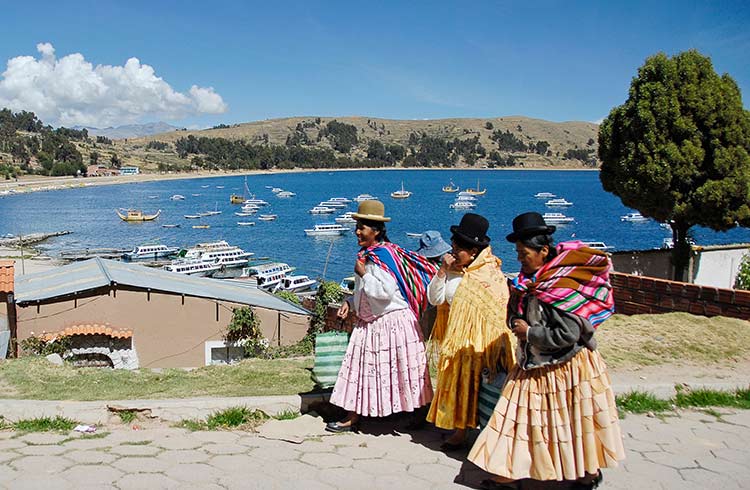 Photo © iStock/vlad_karavaev
Photo © iStock/vlad_karavaev
I didn’t know what to expect of Bolivia. I’ve read Marching Powder (a book by Rusty young about the La Paz prison), seen plenty of travelers photos of the famous salt flats, and of course planned to traverse the infamous Death Road by bicycle.
I entered Bolivia with wide eyes and I left the same way – as it turns out, the real Bolivia was just as fascinating as they say.
1. Traditional healers walk the streets
The best way to dip your toe into the bubbling cauldron of witch-doctor culture is to visit the Mercado de las Brujas (Witches Market) in La Paz. Here, ancient Aymaran beliefs are still practiced by the indigenous people.
Shop vendors sell all sorts of things used in rituals to bring health, love, wealth, and longevity, and to manipulate the spirits in the Aymara world.
Dried llama fetuses hang from the ceilings, and Bolivian families use these to make an offering (cha’lla) to the Goddess Pachamama. These are then buried under the foundations of a new home for protection. Legend has it that large building projects, such as shopping malls or apartment blocks, require a human sacrifice – though these days, it’s more likely a poor llama becomes the offering.
Today, you’ll find more camera-toting tourists than practicing Yatiris (priests) or Kallawayas (healers) here, but if you look out for women wearing black hats and coca pouches, you’ll find the yatiri culture is still alive and well.
2. They traded a huge chunk of Bolivia to Brazil... for a horse
One of Bolivia’s most infamous Presidents, Mariano Melgarejo, met delegates from Brazil in the 1860s to discuss the Treaty of Ayacucho.
As the story goes, he took a shine to a beautiful white horse that belonged to Brazil’s entourage. During that meeting, he drew an outline of its hoof onto a map on the wall, and traded that land for the horse.
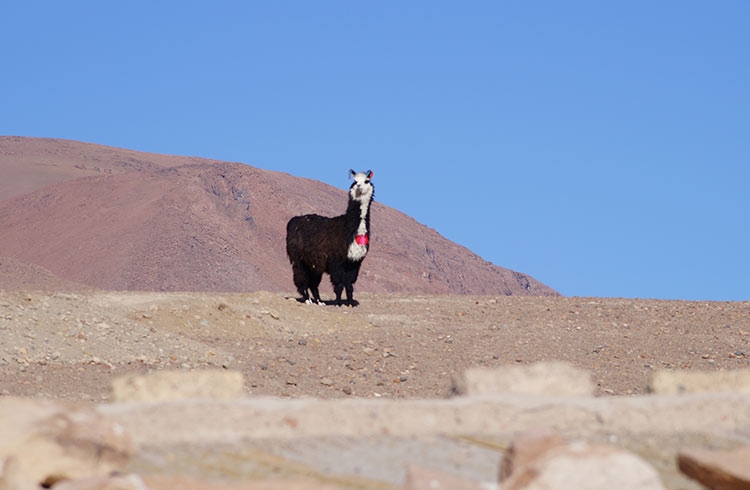
3. There are zebras to help you cross the street
At busy intersections in major cities like La Paz and Sucre, there are people in zebra onesies who help with crossing the road. They wave their arms around and make sure you get to the other side safely – and hilariously.
The Cebritas are part of a volunteer program that was launched in 2001 to help pedestrians safely cross the street – safe to say, it’s now La Paz’s most successful program for alleviating traffic-related incidents.
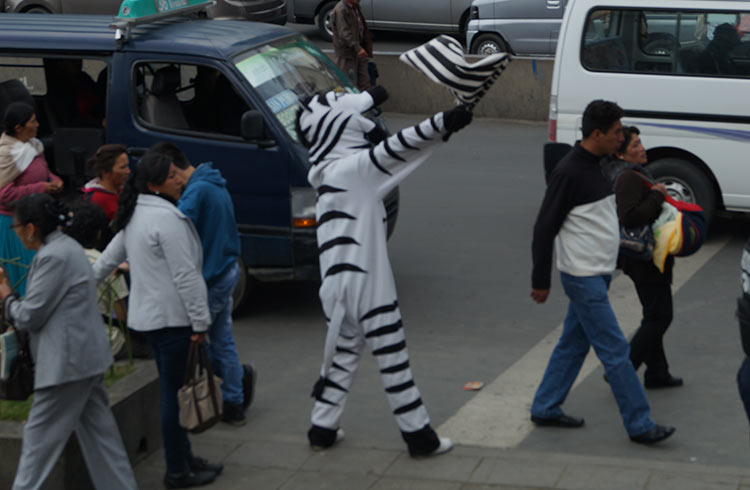
4. Time here goes backwards
A clock on the National Congress Building in La Paz runs backwards, reminding citizens to think differently.
This “Clock of the South” is a mirror image of a traditional clock. Its numbers are flipped, and the hands move counter-clockwise.
It symbolizes the Indigenous groups of the Aymarans and the Quechuans, as their unique views look at the past as in front of oneself, while the future is behind.
President Evo Morales, the first president of Aymara heritage as well as the man who commissioned the clock back in 2014, famously said that the clock also symbolizes self-expression and pride: “Who says that the clock has to turn one way? Why do we always have to obey? Why can’t we be creative?”
5. Bolivia is a multicultural country
With 37 official languages, Bolivia leads the way in South America for recognizing its original inhabitants.
Spanish and Quechua are spoken in the Andes region, Aymara is spoken in the Altiplano around Lake Titicaca, Qhiquitano is spoken in the central region of Santa Cruz, and Guarani in the southeast near the border with Paraguay.
Be sure to learn a bit of Spanish before you go to make your travels easier.
6. Cholita wrestling is a thing
Cholitas are indigenous women who wear bowler hats with braided hair. “Cholita” was once a derogatory term for indigenous or mixed-heritage girls, but it’s now come to have positive connotations as a name for the empowered, fashion-conscious, and proud women of Bolivia.
In the Latin-American sport Lucha Libre, the Fighting Cholitas are a group of female wrestlers who perform three nights a week, not only against women, but against men too.
If you’ve got nothing to do on a Sunday night in La Paz, head up to El Alto and part with US $1 to watch these tough ladies battle it out in the ring – WWF style.
Related articles
Simple and flexible travel insurance
You can buy at home or while traveling, and claim online from anywhere in the world. With 150+ adventure activities covered and 24/7 emergency assistance.
Get a quote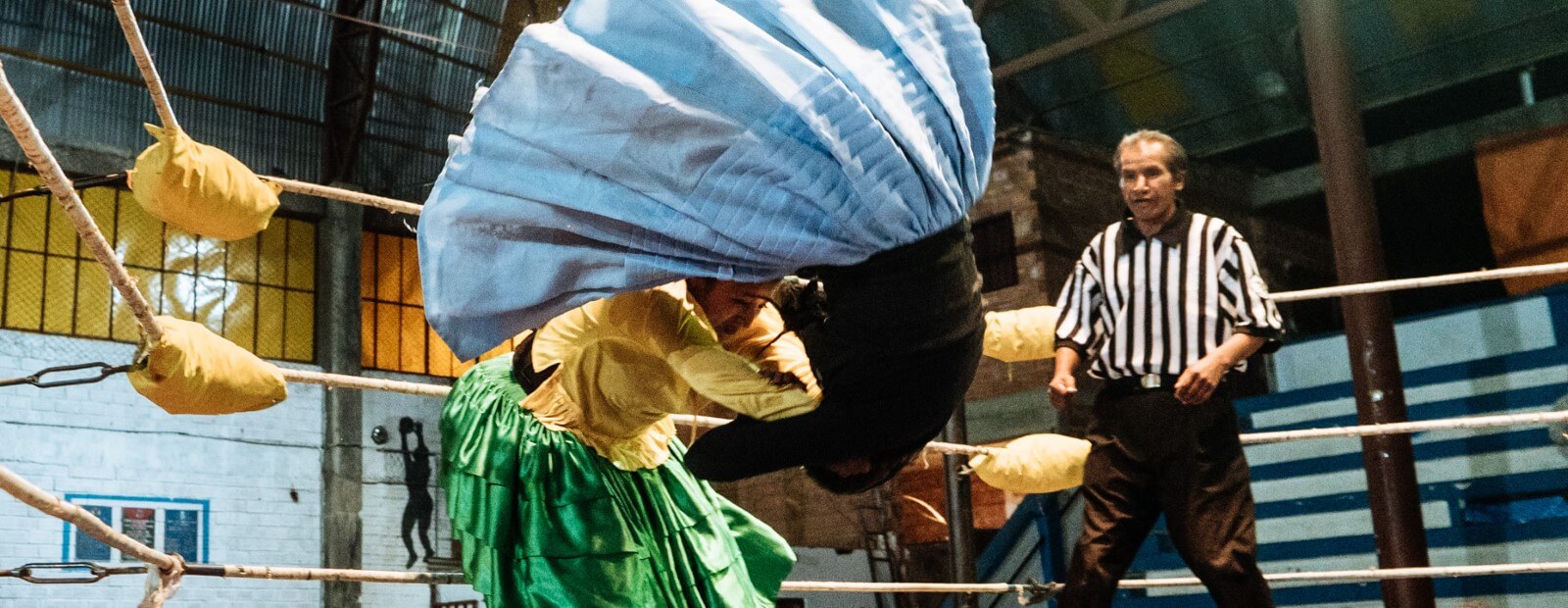
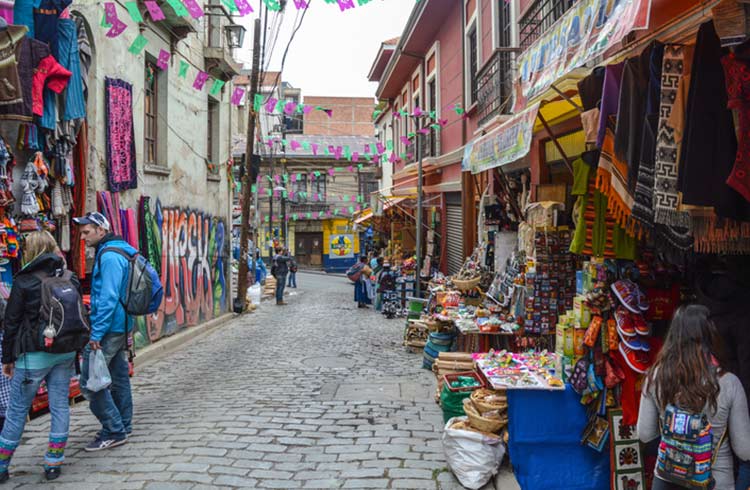
16 Comments
The people of the Andes do not chew "cocoa" (chocolate) leaves; they chew coca, or Erythroxylum coca (as in Coca Cola, which years ago did contain small amounts of the active alkaloid ingredient of coca, which when catalyzed with lime produces small amounts of cicaine hydrochloride). Coca leaves, please. Also used to make té de coca (no cocaine), used to help those not used to high altitude avoid soroche (high altitude sickness). Coca is a mild stimulant, unlike its derivative, the powerfully stimulating cocaine.
I found this article disturbing. I think it is bias and culturally insensitive. I think it is demeaning to the Bolivian people and their way of life.
I hope an apology is issued to this beautiful indigenous people for this awful article that portrays them and their culture in such a negative light.
Respectfully,
Rev. Belinda M. Curry
Louisville, KY
I have no idea what the Rev. above is talking about. Culturally insensitive? What? Where?
Good article! I love the bowler hats of Bolivia. They seem a kind and inspired country.
I have read tons of various travel srticles and found this article to be very good - informative, complimentary and not the least bit negative. Whomever this 'Rev' is from Kentucky is, sounds like she reads the reverse of what is written. Loved your article, keep 'em coming!
It's worth noting that the wines of Bolivia are surprising good. I had a bottle of white that was wonderful and went perfectly with trout.
I lived in Bolivia for seven years in the eighties. The people are wonderful and friendly but you don't get to know them as a tourist. There are colorful markets and great public transit, but again I can't imagine you would get too intimate with these things as a tourist. The poverty is crippling and healthcare, although inexpensive by our standards is not great nor readily available to many. There is a river surrounding Cochabamba-at that time pop about 250k. About half households had no indoor plumbing. City streets or this river were used. River was also used for bathing and washing clothes. One morning we went out and a military truck had backed half over the retaining wall of the river and was stuck. It had been emptying trash in the middle of the night. Caught red handed!
Heather, comments regarding the women are offensive. For example,
"Cholitas are indigenous women who wear bowler hats with braided hair. You’ll see them wandering the streets, chewing on cocoa leaves, and sometimes squatting for a pee in the middle of the road."
My husband is from Bolivia - although senior citizens, we have been together for only 13 years. He proudly calls me "My Gringita". Through him, I have come to know a lot of Bolivian people who have come to the US for opportunity. Many do not have families here and all are welcome in our home.
His mother was a Cholita and so are his four sisters in Cochabamba. I have never seen them "pee in the middle of the road" but I am sure that there are Cholitas in La Paz that do. His mother was uneducated and never learned Spanish. She spoke only Quechua and he is very proud of his mother. I have been to Bolivia twice and we are going again in September. The Bolivian people, both there and here, are dedicated to their culture and traditions. The young people are also determined to hold on as there many large and active folkloric dance groups who are also quite competitive. I would suggest everyone attend a Bolivian festival if they have the opportunity. You will find welcoming, warm people, good food, fantastic music and a lot of dancing.
I have spent extended time in Bolivia traveling and you will, indeed, see women squat to pee by the side of the road and sometimes in the middle, as suits them in their time of need. This seems simply to be an observation and I found nothing in the comment offensive. Nor is the comment that women may be wandering and/or chewing on coca leaves. The Reverend is ridiculously over sensitive. Nothing was offensive in the commentary on observations. I saw this throughout many rural areas and in the Altiplano. If you plan to travel Bolivia you best speak Spanish, which will get you by, but there are many languages and English won't be one of them except at expensive tourist spots, typically. That said, have fun, enjoy the culture and try not to burden an overburdened society. The Quechua people I met were lovely.
When we travel to other countries we accept there culture and embrace it, I found the Bolivian people friendly and helpful, let's just stop for a min and say thank you for the way of life and help we get in the west.
These hard working people even in there old age weee outside in the streets working and being active not like a lot in the west that just want more more more, bless these people.
Nothing offensive in this article. It was fun to read and very informative. Keep on trucking!
I was on Titicaca-I hope Rev.Belinda don't take offense at that but didn't land because they want $220 for a visa. Peru was much more civilized & I got in for free.
So the morally “offended” Reverend took issue with what was said in the article, about a realistic observation regarding the differences between Bolivian culture and our own..
But how much you wanna wager, the ”Reverend” voted for the “p****y grabbing”, pedophile for senate, supporting, Donald Trump.
Reverend, do us all a favor, and leave your judgment for yourself and the rest of your hypocritical flock. Your kind have lost all moral standing in America, thanks to your support for the most immoral, bigoted, racist and out right worst president in our history.
As a Paceña (person from La Paz, Bolivia) living in the US for the past 5 years. I find this article real and not offensive, but can be easily misunderstood if you haven't been there or experienced the culture. You see... Bolivia is a country of extremes and contrasts and that's why it's a place unlike any other...just wonderful, beeing overall cultural and enigmatic.
Cholitas are the representation of strong, hard working women and yes the bowler hats, the braids, the polleras (big puffy skirts) and mantas (large shawls) are part of their everyday clothes. And are the ones that keep our culture alive, because they are the culture itself. The ones cooking our traditional dishes, making our clothes, keeping our traditions and native languages alive. Yes they are not perfect and older generations are not educated so sometimes they will pee on the streets (good thing it rains a lot and washes off to the drains, don't think it's the norm or that it stinks everywhere), because finding bathrooms is not as easy as it is in the US. Yes cholitas are a mix of indigenous and Spanish heritage, but you can hardly see traces of that Spanish blood as the mayor population of Bolivia is native to the land and has taken over the genes. You won't only see cholitas wrestling, but playing soccer, driving buses and taxis, running businesses, carrying their kids on their backs and all that while chewing on the sacred coca leaf.
Witch doctors or Yatiris are well respected people and who doesn't want to have their luck read on coca leafs?.
Zebras are goofy and fun, they won't only help you crossing the streets, but as well to teach about traffic rules and they will be happy to get a selfie with you.
Bolivia hasn't had luck choosing their Presidents. But we keep trying, and we will keep fighting for our democracy and for a better future, we are a country in development and we are still learning from our mistakes.
And finally, Bolivia is a multicultural country like the writer of this article stated correctly and that's one of its beauties. Music is one of the highest representations of each culture, we love dancing, partying and eating. We are proud of our folklore and diversity.
Bolivia is much more than breathtaking highlands and high mountain, it's also valleys, rain forests, Amazon and desert. We are the heart of South America and that's why I love it.
I want to thank Matt Casttel. I wish I could read more articles about Bolivia, this country deserves to be known to the world.
I thought the article interesting..made me want to visit..I only came upon it by accident whilst googling ' where ancient nomadic woman urinated' after years of living in the aus bush, moving into a unit in town was thinking geez I'd love to step outside for a wee...can't do that anymore...wondered about the ways of others.. so to the ladies of Bolivia, I'm with you girls, if it's good enough for fellows why not us ladies.
Disclaimer: I have never been to Bolivia - I desperately want to go but I suffer from HAPE so I satisfy myself with just researching it through first person accounts like this.
I did, however, grow up in rural India and saw many women squatting to urinate and even taking a dump right on the tarmac on country lanes. They were not trying to hide it but, as a local, you knew you were supposed to avert your gaze and walk on. We all knew that doing it on the road was "safer" than doing it in the bushes with regard to snakes and scorpions.
That was 40 years ago but I have also observed this phenomenon more recently in Mexico, Peru, and Cambodia.
It's a fact of life in many countries. There's nothing racist about an observant tourist taking note of it.